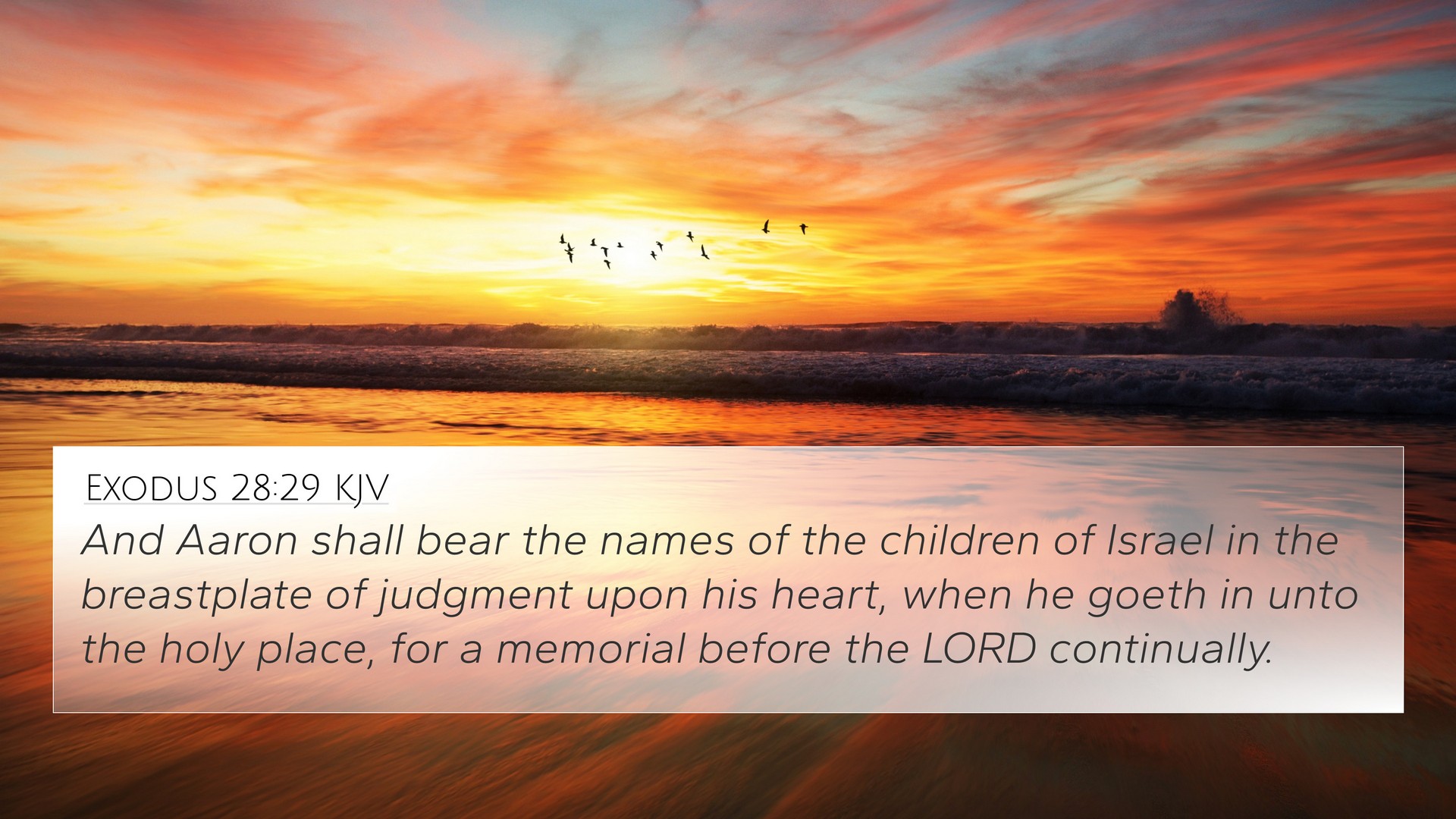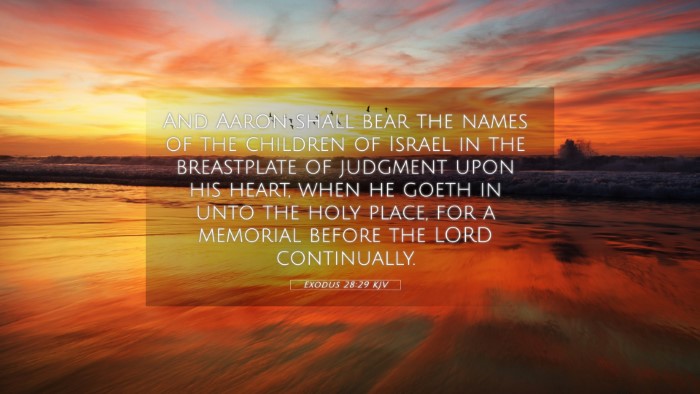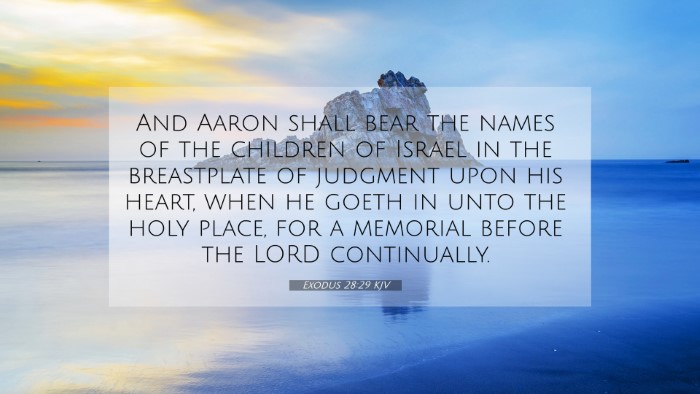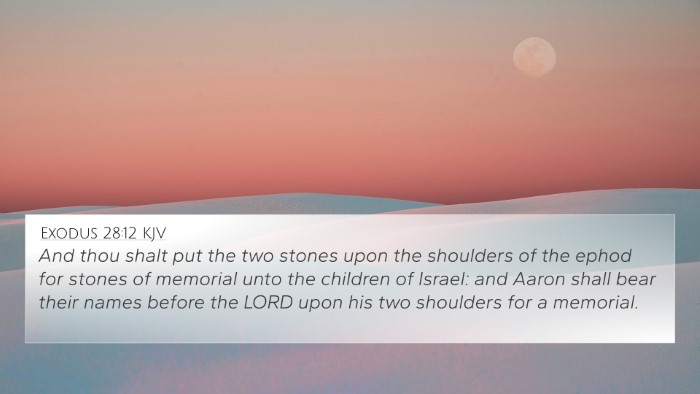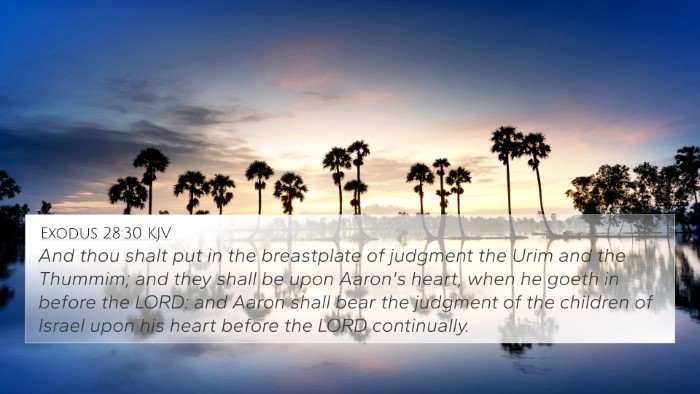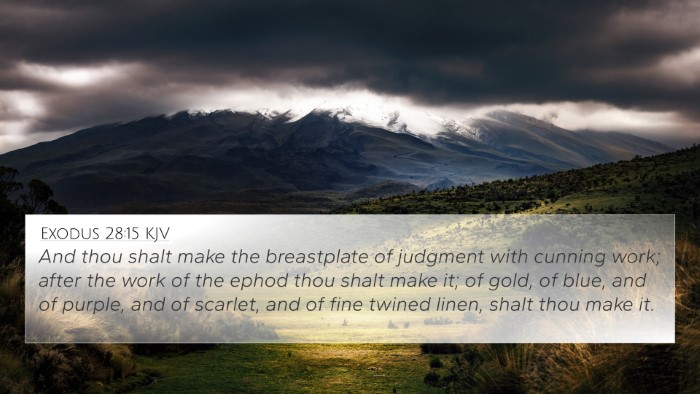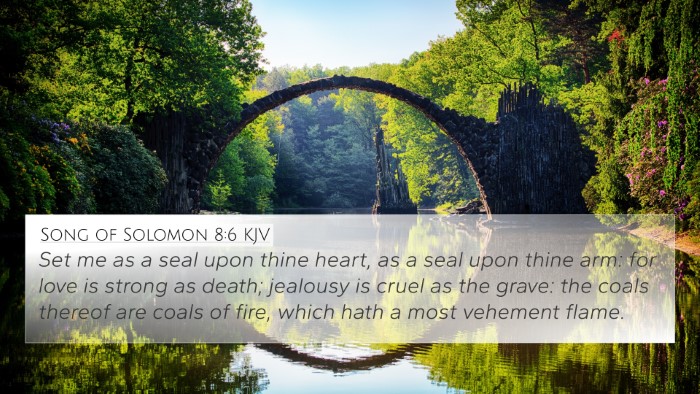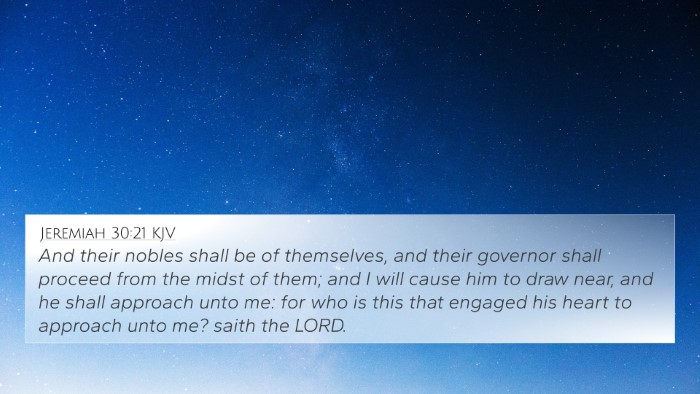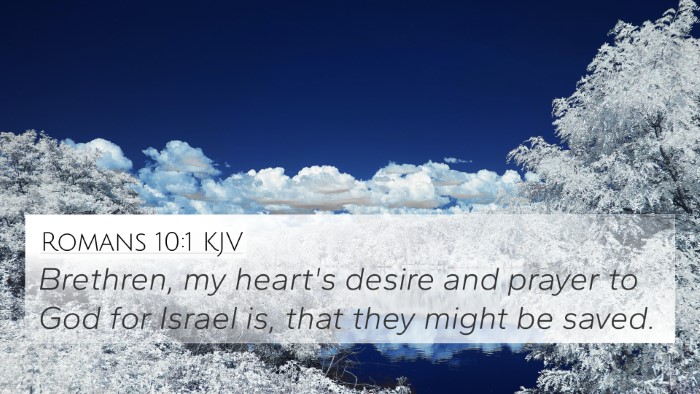Exodus 28:29 - Understanding the Verse
Verse: Exodus 28:29: "And Aaron shall bear the names of the children of Israel in the breastplate of judgment upon his heart, when he goeth in unto the holy place, for a memorial before the Lord continually."
Summary and Interpretation: This verse highlights the significant role of the High Priest, Aaron, in representing the people of Israel before God. The breastplate, which holds the names of the tribes, symbolizes the continuous presence and intercession of the people before the Lord. This act serves as a memorial, emphasizing the deep connection between the mediator (the High Priest) and the people (the tribes of Israel).
Key Themes
- Representation: Aaron's role as a mediator signifies the importance of representation in spiritual matters.
- Memory and Memorial: The act of bearing the names serves a reminder of the covenant relationship between God and His people.
- Holiness: Entering the holy place signifies the sanctity of the worship experience and the seriousness of approaching God.
Insights from Commentaries
Matthew Henry: Henry emphasizes that the breastplate was a divine appointment, showcasing God’s care for His people. Aaron's service as High Priest and the bearing of names symbolizes a commendable duty of remembering and advocating for the Israelites before God.
Albert Barnes: Barnes notes the significance of the names being on Aaron's heart as a representation of love and compassion. He suggests that this act of carrying the names reflects God’s attention to His people's needs and situations.
Adam Clarke: Clarke reflects on the ceremonial function of the breastplate and its spiritual implications, implying that the heart represents the seat of emotions, where the love for God and His people intertwine.
Cross References
This verse connects to several other scriptural passages, revealing deeper biblical connections:
- Exodus 28:15-21: Describes the design and significance of the breastplate.
- Leviticus 16:8-10: Discusses the ritual of the scapegoat, reflecting the themes of atonement and representation.
- Hebrews 7:23-28: Talks about Jesus as our eternal High Priest, linking the Old Testament's sacrificial system with the New Covenant.
- Revelation 21:12: Mentions the names of the tribes written on the gates of the New Jerusalem, highlighting the enduring significance of the tribes.
- 1 Peter 2:9: Describes believers as "a chosen generation," indicating how all of God's people are represented before Him.
- Psalms 106:23: Here, Moses acts as a mediator, paralleling Aaron's function in representing Israel to God.
- Isaiah 53:12: Foreshadows the role of Christ in bearing the sins of many, much like Aaron carries the names.
Thematic Connections
Understanding Exodus 28:29 can enhance your Bible study experience as you explore thematic connections across Scripture:
- Mediation: Explore how the concept of mediation is echoed throughout the Bible, from Aaron's high priesthood to Christ's ultimate sacrifice.
- Covenant Relationships: Investigate how God’s covenants with His people are represented throughout both the Old and New Testaments.
- Intercession: Examine passages that highlight prayer and intercession, such as Romans 8:34, deepening an understanding of how believers can intercede for others.
Tools for Understanding and Cross-Referencing
To enhance the study of Exodus 28:29 and find similar Bible verses, consider using:
- Bible Concordance: Useful for locating specific words and phrases across the Scripture.
- Bible Cross-Reference Guide: Aids in understanding how different verses relate to one another.
- Cross-reference Bible Study Methods: Employ systematic methods to unravel the interconnections between Biblical texts.
- Bible Chain References: Follow linked verses that deepen thematic studies and provide context.
Conclusion
Exodus 28:29 serves as a powerful reminder of the connection between God and His people, emphasizing representation, love, and intercession through the figure of Aaron and culminating in the work of Christ in the New Testament. By engaging in comparative Bible verse analysis and utilizing various cross-referencing tools, individuals can expand their understanding and discover the profound ties that connect Scripture.
Understanding these dynamics through cross-referencing supports a deeper appreciation of God's Word, revealing overarching themes and stunning scriptural symmetries that speak to both the faith and understanding of the believer.
